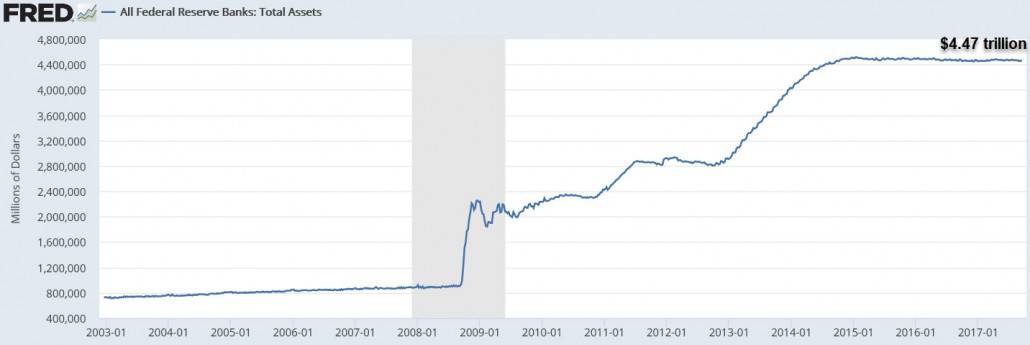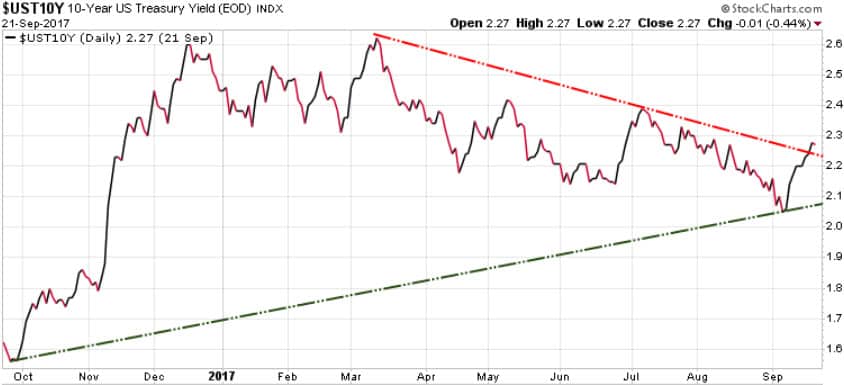As the Fed unwinds, what is the impact on interest rates?

As expected, the US Fed announced on Wednesday that it would start slowly reducing its massive $4.47 trillion balance sheet.

Starting in October, the Fed will end its practice of fully reinvesting the principal payments of maturing bonds into new bonds, and instead allow $10 billion in holdings to roll off, meaning they will not re-invest that money into new bond purchases. Those amounts will increase by another $10 billion each quarter, until they reach their maximum target of $50 billion per month.
The Fed has gone to great pains to plot out its moves so that it doesn’t unnerve markets. It has emphasized that the reversal of its controversial bond-buying program is supposed to be a boring, gradual process. Fed chair Janet Yellen has expressed hope that it will “just run quietly in the background” in the coming years. Philadelphia Fed President Patrick Harker has gone so far to compare the process to watching paint dry.
Given the large size of the Fed’s debt holdings, in the absence of Fed bond buying for reinvestment, the market will need to find private sector investors to fill the void. Consequently, there should be some upward pressure on yields, especially since the Fed will also likely continue to raise short-term interest rates as long as we continue to see improving economic growth.
If inflation actually gets past the targeted 2%, then growth and inflation, combined with the Fed balance sheet reduction, should give interest rates a boost.
Geopolitical events, such as North Korea tensions, can certainly send ‘safe-haven’ capital into bonds temporarily, but longer-term we should see pressure on bonds, which will push yields higher.

Mortgage rates may feel the impact more than the Treasury market. The Fed holds about $1.75 trillion in Mortgage Backed Securities (MBS), which is almost 40% of the outstanding securities issued by Fannie Mae and Freddie Mac. Until the Fed began hinting at reducing its balance sheet, MBS yields were only about 1% above Treasury yields of similar maturity. The yield difference has begun to widen recently, and as the Fed pulls back from the market, mortgage rates should move higher.
Stay tuned!
Note: We sent out a trade recommendation on Tuesday to subscribers of The Trend Letter to take advantage of rising bond yields.
If you would like to subscribe to The Trend Letter to receive all of our BUY & SELL signals, and receive a 38% discount off the regular rate, CLICK HERE
